Why The Fender Princeton Reverb Is Still The Best Amp Out There
Here’s a little blog about my favorite amp of all time. Sometimes the word favorite is spelled with a u. So you’d have favourite as a word. Doesn’t matter. The Princeton Reverb is still my go-to-amp and if you’d get your hands on either a proper blackface one or a well maintained silver-face, chances are you are going to feel it’s not replace-able anymore. I’ll explain why and a few tiny mods to make this amp perform optimal in the modern era.
does the blackface reissue sound as good as the orignal?
Again? No, man. Let’s move on to the blog.
Ok briefly! The 68′ Custom Reissue soundwise already is a much better ‘Blackface’ reissue than the 65′. The 64′ Custom is the best Fender branded reissue of the Princeton Reverb out there. It’s build point-to-point, but it isn’t exactly friendly priced.
When we talk about the 65′ Blackface Reissue, it is friendly priced though. And that’s nice, but the core aspect of what reissue means isn’t in the story. That’s technical re-issue and not visual. I don’t mind any new take, however. But the 65′ has different feel bias-wise, a harsh sounding speaker, a pcb-board construction method, and is loaded with inferior components.
It can all work nicely and sound reasonable, but it just makes it impossible to really get what made the amp in the first place. When you build a Princeton in the simple PtP way it was build, it will deliver it’s response, because technically it won’t even be able to do anything else than perform great.
With that out of the way, please let’s move on.
Why I use a Fender Princeton Reverb
Most of the Time
Why I use one of the most iconic guitar amps in history, both in the realm of recording as well as live? There are many good reasons why. This amp basically ticks all the boxes a guitarist has. When it comes to a clean, slightly or out of whack overdriven tone. The size, the weight and overall user friendliness. In recording it’s sonic character is so easy to shape due to great pedal-response. But also just whack it on the volume, give it the treble and it properly rocks. It can really perform and shine in different styles. That’s why it suits so many different players in the industry.
It’s also has some looks, don’t you think?
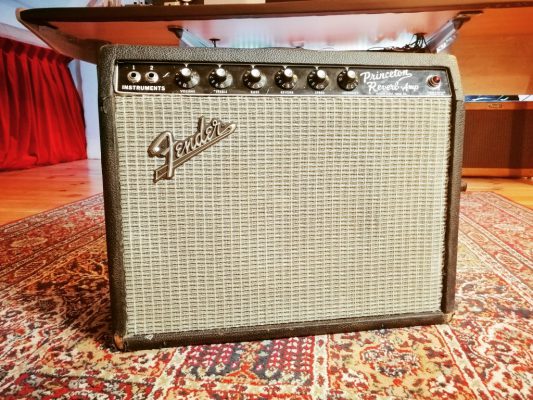
basic features
Simple, yet complex enough. It’s a combo, so it houses a 10 inch speaker. It puts out 12w-18w, depending on how it’s biassed. My example has a 12 inch speaker, but we’ll discuss that later. It has the iconic spring reverb as well as the tremolo that you want, being the bias modulation variety.
There’s a high and a low input. Volume, treble and bass controls, the reverb control and the speed and intensity controls for the tremolo. You’ll find these on any Fender from this era with a tremolo.
tweed/brown/black/silver
The blackface Princeton Reverb sits between the tweed, brown face and silver face era of amps. A tweed style amplifier is known for it’s raw overdrive and has a lot of compression before that. With a Tweed Deluxe, you can actually ‘feel’ the amp compressing the front end of a note. That’s why fast players may dislike it.
A silver face era amp however, tends to have a lot of headroom from design. That yields a better clean sound, as that’s what the intension was. Also more punch and a less of a move-able low end. Now, I have heard a lot of exceptions, including a Silverface Twin Reverb, breaking up nicely on 3. Not sounding stiff on low volume. But also a Vibro-Champ staying clean all the way to 10 and a tone cold as hell. Hell being the cold version where everything just sucks. Anyway, it usually comes down to bias settings in how clean or driven you amp sounds.
Lucky Dodge
The Princeton Reverb is a bit of an exception, as the Silverface and the Blackface version are identical in design. Read identical in design but the transformers, the components on the board are of a different quality. And if you’re in bad luck, the lead dressing won’t be as tidy as in a blackface era amp. Replacing the capacitors and correcting lead dressing however, will you very, close to blackface specifications! In the video on the right, you’ll see a complete overhaul of a bone stock 76′ Princeton Reverb:
Due to today’s power outlet it may sound a little cleaner and less sweet than desired, hence a common and needed black-facing of the bias-circuitry.
cons, yes there are, and solutions
Transformer Crackling...
WHAT? Yes, the output transformer is tiny, as tiny as in the single-ended champ amps. It runs at it’s limits and when the amp is pushed hard, you can notice high frequency crackling on top of the sound. Some might say it’s part of the Princeton overdrive sound. I agree, but it may concern some players. In a recording situation however, this sound sometimes does interfere with your intended sound. No solution here. Upgrading the output transformer will basically transform the amp too much.
Loose Ends
The low end in this amp isn’t tight or anything. It is deep and rich. But for anyone that wants a tight oomph this may not be the one. Coverting the 10″ to a 12″ speaker may help the low end somewhat, but only as much as the cabinet can give your. Increasing the 1st filter cap value a little, does a little, but overdoing will kill harmonics, as well as stressing the output transformer. Fresh stock value electrolytic caps in general is a good idea. This amp is not designed for low end tightness but wins the points at musicality.
Vulnerable & Expensive
Would you gig an original and highly collectable amp? You only live ones, so does the amp. I would, haha. But needless to say, the original vintage amps may need protective work to make them operate correctly on the road. You don’t want to blow your transformer or speaker because you are a purist who feels the amp should be original and played with broken capacitors it came with 50 years ago. A good running silver face converted to both blackface quality would be my advise to gig a vintage amp and have it sound as good as possible for a reasonable pricetag.
Wrong bias voltage & tremolo issue
Because of the risen voltage from the wall compared to the days these amps were made… The tremolo operates on the bias modulation of the output tubes. With higher plate voltages, the tremolo may sound weak. Even weaker then it already does with the correct bias. The bias is set at a fixed value , but the stock component values with a higher incoming voltage set the amp at a different bias. Because the bias is slightly hot, it’ll be a little louder, punchier but also cleaner, and have less harmonic distortion.
Converting it to adjustable bias can fix that, and make sure to use a proper 5UB rectifier. That’s the correct one, but you can find later ones operating with a GZ34, cleaning up the amp a bit. The problem is that the higher plate voltage may even exceed the 6v6 tube’s limited rating. You might find the tremolo still weak after that. Lowering the 1M value of this resistor by about 50% will help cure that! I went down to 330k, 33% value.
my version
So, mine started it’s life as a 1979. A non-reverb. I got it cheap, but it turned out to be modded out over the top. My friend and amp guru Rogier Kerkhof rebuilt it into a blackface spec Princeton Reverb in 2010. Since, I’ve gained interesting in building and working on amps myself and I’ve maintained it ever since.
The Mods
Guess which mods it has…Today it has a 12inch Rola Celestion Greyback speaker. It makes the amp sound quite dark, but I like that in a non-recording situation. The treble can be dialed in quite liberately like that and the tone is deep and warm. Tremolo resistor value to 330k, adjustable bias. 5U4 Rectifier. Mallory 150s for tone caps, F&T for filter caps, Sprague Atom for Bypass caps.
recording it in the modern era
Yes, although this amp sounds good on low volume, to get a really balanced and rich sound from a guitar speaker, the amp needs to able to work. Volume 3-4 for cleans can be loud in a home recording situation. I record this amp using the torpedo captor as a reactive loadbox and use the speaker IR’s from either a greenback, blue alnico, or electro voice type speaker. Mics are usually a SM57 paired with a R121. This setup is yielding a great tone fairly quickly.
Dual Amping - Mike Campbell Setup
It’s fantastic and effective to run a Princeton and a Tweed Deluxe in a dual amping setup! They sit in each others frequency hiatus!
Where you would think the Blackface gives you the scoop and the Tweed the mids, my personal experience gave me the opposite! But the ‘Sweetness’ up untill a certain volume level comes from the Princeton and the ‘Rawness’ and punch from the Tweed.
Mike Campbell uses this setup live. And when the circumstances allow for it, so do I
Conclusion -
In MY Opinion, YOU Want This 😉
The blackface Princeton just provides you with a very sweet, warm but balanced tone, just like that! A lot of tube harmonics are audible in chord playing; the character is there, even on low volume. It’s breakup starts around 3-4 and is user friendly. The transition to crunch is smooth it won’t sound too fuzzy either. But even all the way up sounds musical and. It’s definitely not a high gain amp, but rather rock and roll. Working with the guitar’s controls and what the amp can give you is great fun. You can work your way from funk, jazz to blues to rock. It challenges your skills, but frankly, it’s hard to make this amp sound bad. That’s why I still use it almost all of the time, both in a recording and in live situation. It’s quite remarkable that an amp can stand out in both of the realms of a working guitarist.
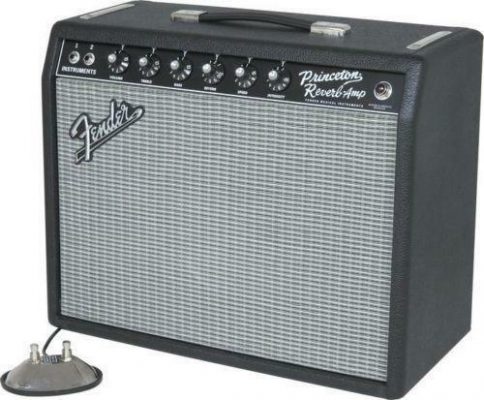
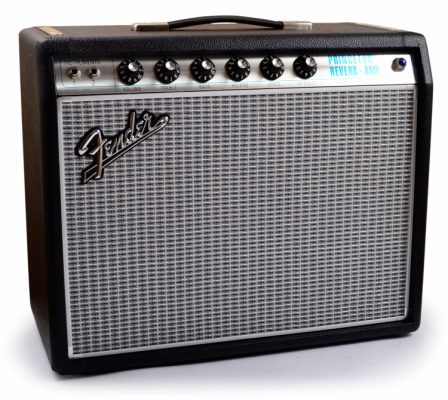
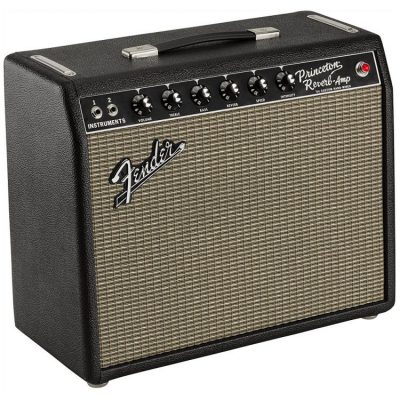
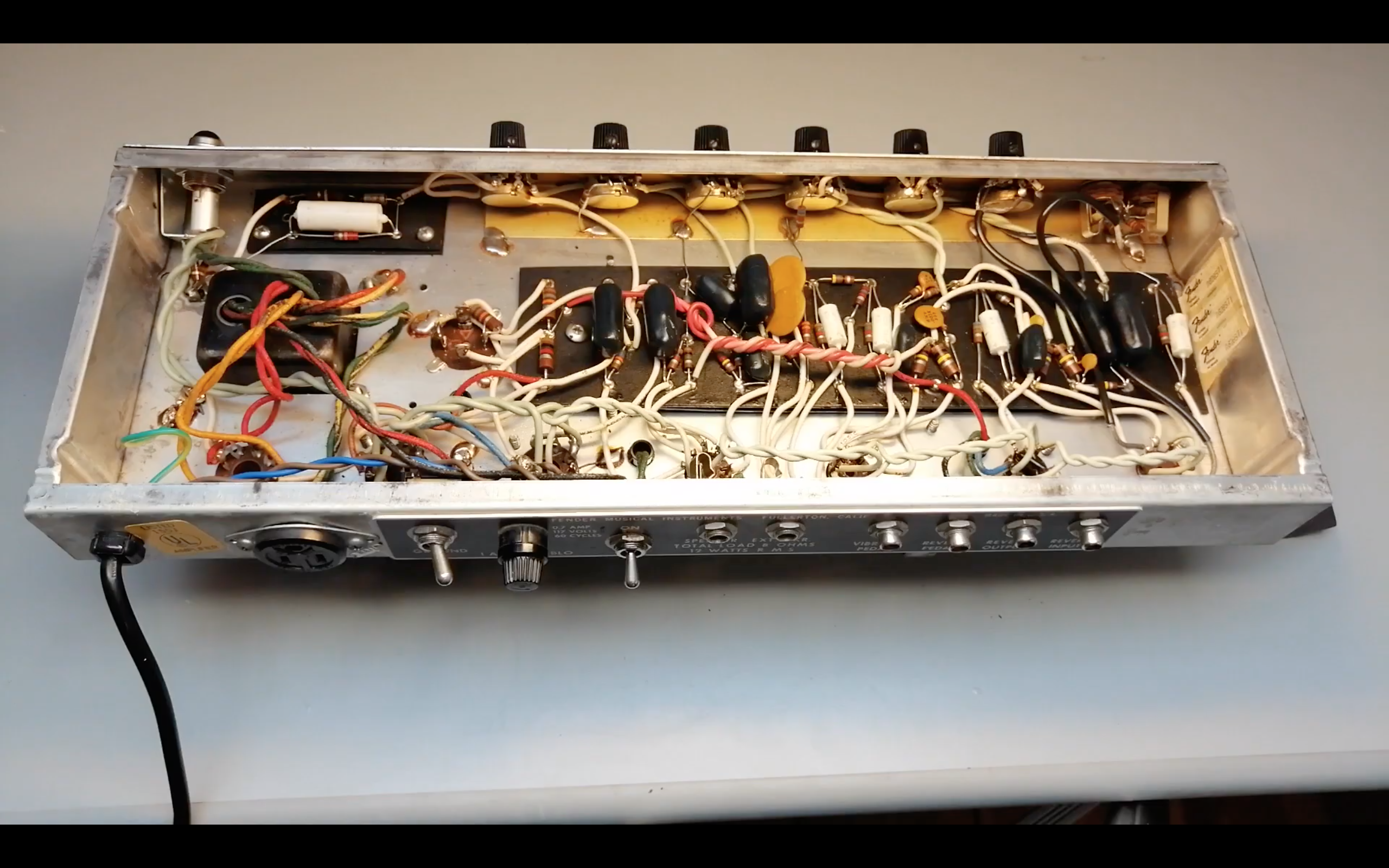
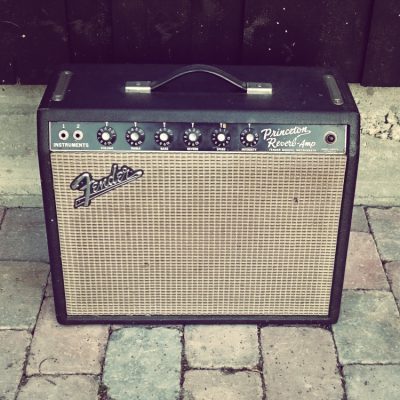
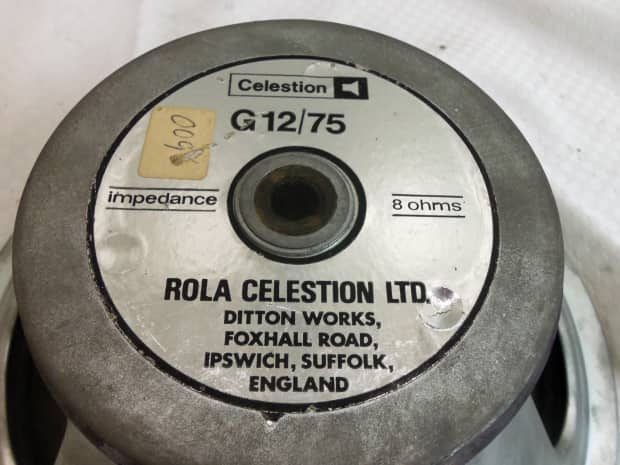
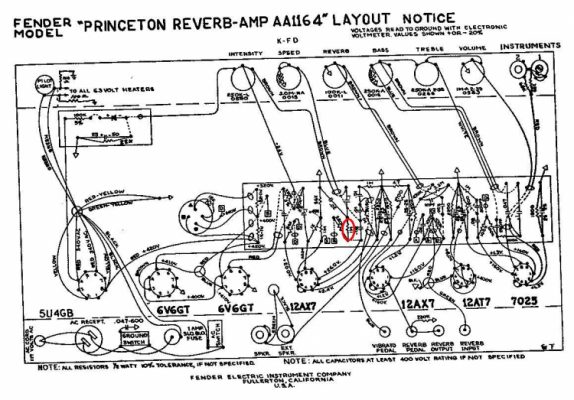
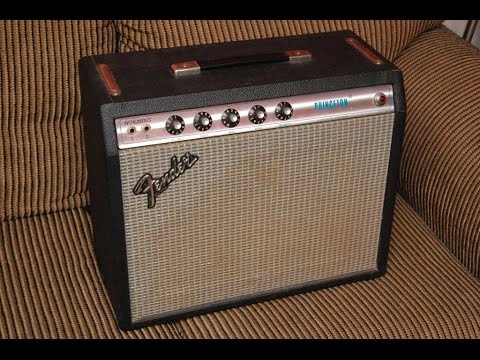
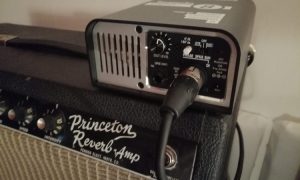
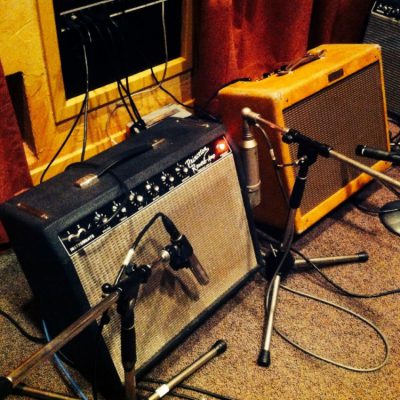
Am picking up a late 70s Princeton Reverb from an estate sale tomorrow, untested. Has the push/pull knob.. Ordered a ’71 Oxford L5 to go in it. What else would you recommend I do once I bring it to my guru tech? Great article, and thanks in advance!
Hi Paul,
Congrats on the late 70’s Princeton, it should be an amazing amp. If it’s at an operating state, first enjoy it a little. But make sure it has fresh electrolytic capacitors in to protect it’s future.
Depending on how original it still is, consider a blackface bias mod to be able to dial in the power tubes’ voltages with correction to today’s power outlet levels. Your tech knows how and it’s an acceptable common mod.
If you enjoy a long sit, i’ve made this overhaul video some years ago: https://youtu.be/Is8QwMcZzr0
Please enjoy the amp and never let it go unless you can up-level the example. Point to Point Princeton Reverb’s are simply a perfect invention.
Kind Regards,
Nice overview.
I got a pull boost PR a while ago (1980 model I think) this one is blackface which is original AFAIK.
I’ve had a mid 70’s 40/45W SF Pro Reverb for ever, which I love but it is quite loud, hence the PR.
As soon as I tried the Princeton I knew it was for me. Very sweet to play, breaks up beautifully without blowing your eardrums out…
But as loud as it sounds in a home studio at reasonable playing volume, a loud drummer soon puts it in its place! I end up running it quite full on, which is definitely well into breakup level. Sometimes I link it with the Pro.
Anyway, I’ve read the circuit in the pull boost version is very close or almost identical to the earlier std SF version at least, if not the blackface (?) The main difference being the pull boost circuit. Oddly I can find uses for this but it seems to be almost universally despised! I’ve various ideas about whether I could lose the boost & have something else in its place (e.g. mid pot) but that’s low on the priority list. Another is to have vib speed control via a foot pedal, although there is probably a pedal on the market that would do this.
You mention the wall socket voltage as having had an effect on the amp’s biasing & output etc. I take this to mean US power supplies have changed in some way. In the UK we have been 240v AC since the 1970s at least (with a 6% tolerance 225-254v) but since 1995 we have a wider tolerance at (216-253v) closer to the European 230v standard.
Do you think the above has any effect on PR biasing in the UK?
I have to do some maintenance on the amp since the vibrato is very weak, certainly compared to the Pro. Probably more seriously it sometimes takes 15 mins or more to warm up & recently seems like it wont start up at all, although I’ve been able to coax it eventually. I don’t know what’s at the root of this problem as yet & am a little worried at running it like this since a bandmate had a neglected Selmer blow up spectacularly (& expensively) at a gig… So a service is due at least.
I would like to sort any going duff, or at risk caps etc. & maybe mod it towards true blackface direction if its useful (although TBH I’m pretty happy with it tone wise). I have no idea about the current state of bias. It still has the JJ valves it came with but they must be pretty old by now.
Hi there, and thanks for the message. Biassing a PR as close as possible is a matter of blackfacing the bias ciruitry and working with a 5U4b rectifier. I’m currently running is non-adjustable though and a little low. Old tubes aren’t necessarily bad and JJ’s are pretty sturdy. Do you know how to safely calculate the bias?
How can I get help on servicing my ‘69 Princeton Reverb?
Hi Bob, you can ship it over to me and I’m happy to do it 🙂 But for convenience you can take it to an instrument shop close to you where they are also dealing with vintage guitar equipment. Kind Regards,